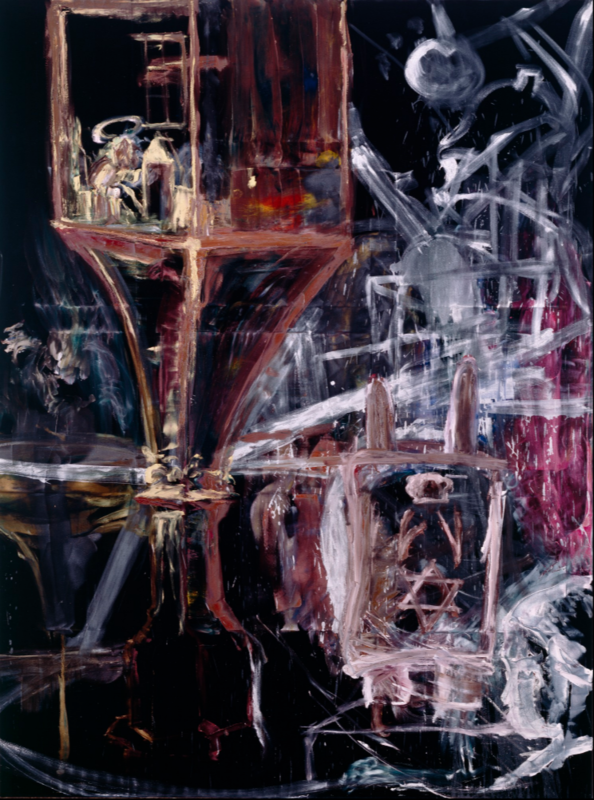More about Cabalistic Painting

Contributor
Julian Schnabel’s pretension shines brightly in Cabalistic Painting.
He had already done his dish paintings, and needed a fresh, new medium – one that he could thoroughly explain the nuances of to people who didn’t ask. This is one of his artistic quirks, that even Andy Warhol commented on in his diary saying, “He tells you about each one, he stands there and reads into his own work. I mean, he literally stands there and…tells you what his paintings mean.” After much deliberation about the possibilities, he came up with velvet, which, according to the Detroit Institute of the Arts, “has historical connections with royalty and an association with kitsch-oriented souvenir pictures.” Odds are Schnabel was going more for the royalty vibe as velvet is perhaps the fanciest fabric of them all and Schnabel fancies himself king of the New York art scene.
The subject of this painting also lends itself to Schnabel’s chattiness. He depicts, as the DIA writes, “an image from the Cabala, a system of interpretation of the Hebrew scriptures dating back to the thirteenth century. He incorporates imagery from both the Old and New Testaments, showing a man seated at a table on which sits an alembic [a distilling tool] and a torah.” So basically this entire painting is made up of things that Schnabel can explain to you in a display of his esoteric dominance. And let’s not forget about Saint John. “In a crystal vial, there seems to be a reflection of Saint John the Divine writing his Book of Revelation.” This is yet another tool for Schnabel to exercise his loquaciousness, as there are four interpretations of the Book of Revelations all of which discuss the apocalypse. All in all this painting is everything Schnabel would need to talk for as long as anyone can listen. It’s complicated. It spans across different religions and ways of thinking. And most of all, it is nuanced AF, leaving Schnabel as our only interpreter.
Sources
- "Cabalistic Painting." Dia.org. N.p., 2018. Web. 27 Aug. 2018.
- "Julian Schnabel » About." Julianschnabel.com. N.p., 2018. Web. 27 Aug. 2018.
- Mendelsohn, Meredit. "Everyone Has An Opinion About Julian Schnabel. But Do We Really Know His Work?." Artsy.net. N.p., 2018. Web. 27 Aug. 2018.
- Sischy, Ingrid. "Artist In Residence." Vanity Fair. N.p., 2008. Web. 27 Aug. 2018.











